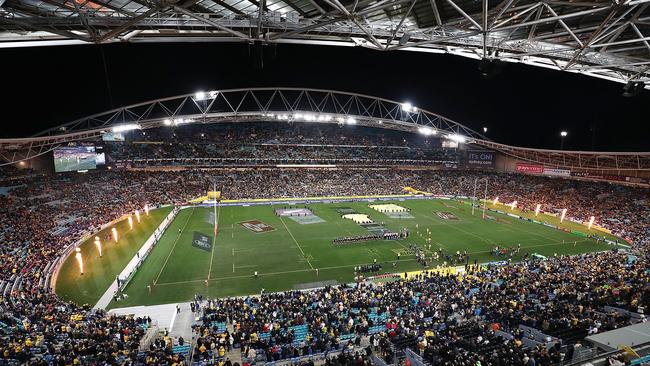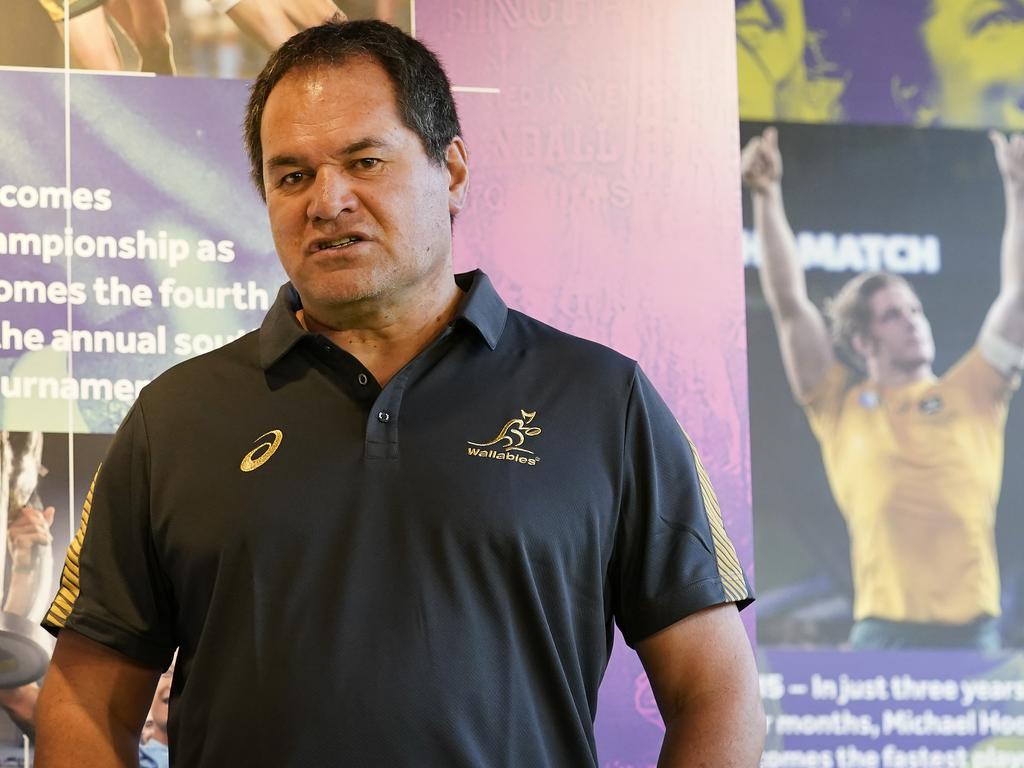Strong financial argument for Wallabies to call ANZ Stadium home
In the early 1990s I secured my dream job as marketing manager at the Australian Rugby Union, now known as Rugby Australia.

It was the perfect role for me but unfortunately it was not to last.
When rugby went professional in 1995, former banker John O’Neill was appointed the ARU’s chief executive. I enjoyed a good relationship with the previous CEO Bruce Hayman but for whatever reason I did not hit it off with O’Neill.
Whenever a new CEO arrives at a company there are always changes. That’s normal and it soon became clear to me I did not fit into O’Neill’s plans.
The matter came to a head when I tried to talk to O’Neill about a business-related issue and was told I had to make an appointment a week in advance. I got the hint and reluctantly gave up the job I cherished.
While I was not forced out, I have a great deal of empathy for the many RA staff who lost their jobs this week, including my old mate David Campese, as part of a savage cost-cutting exercise to keep the national union afloat. I am sure the majority of the staff let go were hardworking, loyal servants of rugby, who did it for the love of the game.
Unfortunately, RA had little choice but to wield the axe because Australian rugby was shaky financially before the advent of the coronavirus but the pandemic threatened to ruin the game.
On the brink of insolvency, RA no longer has the revenue to sustain such a large workforce.
When I worked at RA there were no more than 15-20 employees but this number ballooned to over 200, an expense the game could no longer afford.
When the current crisis is over RA will need to be a leaner organisation than what it had become.
One way for RA to achieve this goal would be to focus on its core responsibilities instead of trying to administer the whole game, overlapping with the Super Rugby franchises and state and territory unions.
Unless RA can create a truly centralised system like there is in New Zealand, it should stick to running the Wallabies, Wallaroos, national men’s and women’s sevens teams and under-20s sides and leave the rest to the states, clubs and community rugby. With so much uncertainty about the financial future of the game in Australia it will take a long time to return to RA’s recent staffing levels, if it ever does or in fact it should.
While COVID-19 has brought the game to its knees, there is one silver lining on a very dark cloud, which RA must take advantage of to get back on its feet.
As a result of the pandemic crisis, NSW Premier Gladys Berejiklian has dumped the plan to revamp ANZ Stadium in Homebush Bay, giving Australian rugby an unexpected opportunity to cash in.
If the refurbishment of ANZ had gone ahead as planned, the 83,500-seat venue would have been unavailable until 2023 at least.
Now RA has the chance to stage a Bledisloe Cup Test at ANZ Stadium every year, which could bring in about $20m of additional revenue over the next four years.
It’s like winning the lottery!
Australia was due to host two of the three Bledisloe Cup Tests this year with Marvel Stadium (53,359 capacity) in Melbourne and Suncorp Stadium (52,500) in Brisbane the designated venues. ANZ Stadium has 30,000 more seats than both of those places.
I assume the contracts for those venues are locked in but if there is a chance of relocating one of the Bledisloe Cup Tests to ANZ Stadium, RA should seriously consider it.
The two Bledisloe Cup Tests in Melbourne and Brisbane were scheduled to be played on August 8 and October 17 respectively, but there is speculation the series will be shifted back to November-December because of the virus.
Would this alter venue availability? There is also talk of a fourth Bledisloe Test being added to the series.
I imagine the Kiwis would want that game in New Zealand but if it could be played in Australia, it would have to be taken to ANZ Stadium.
If RA cannot stage a Bledisloe Cup Test at ANZ this year, it must make sure a match with the All Blacks is played at Homebush Bay in each forthcoming season and beyond.
In fact, there is a strong argument for ANZ Stadium to become the Wallabies’ official home ground, at least for Tests that are guaranteed to attract crowds larger than 30,000 to 50,000.
Sure, countries like New Zealand, South Africa and France share Tests around the cities in their respective nations but England always play at Twickenham, the spiritual home of the game.
It might seem unfair to fans in Brisbane, Melbourne and Perth but at times like this everyone has to make sacrifices for the good of the game. Just ask the RA staff.
Until Australian rugby is back in the black every decision, whether it relates to staff levels, broadcast deals or stadiums, must be taken with a view to monetise the game to the max.
Now, if anyone needs a good marketing man…





In the early 1990s I secured my dream job as marketing manager at the Australian Rugby Union, now known as Rugby Australia.